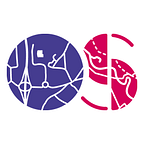Has tech innovation already moved us towards a more sustainable future?
We look at how the convergence of technologies, and those who can navigate such changes, affect the transition to sustainable alternatives.
Throughout history, when challenged, we have thrived through collaboration, imagination, and a whole plethora of tools. From the first permanent settlers of the agricultural revolution that would eventually become the foundations to building civilisations, all the way up to using Mathematics, Science, and data to land on the moon.
When faced with adversity, or an opportunity for change, a combination of collective imagination, technology, and government policy, is enough to set in motion actions that can shape the future.
A series of historical events
General Purpose Technologies (GPTs) are technologies that have the potential to drastically alter societies and drive economic growth. Currently, due to the pace of technological growth, we now have new several GPT’s including Artificial intelligence, Blockchain technology, Robotics and Connected autonomous vehicles.
These emerging technologies have the power to drive innovation on an unprecedented scale, touching every aspect of modern-day society.
Often, GPTs are created during some of the most challenging circumstances. After all, difficult times and events from the past have led to innovation and technologies that are continuing to impact our everyday lives. Examples include electricity, which in turn led to additional innovations such as the lightbulb. Another would be the steam engine, that powered the industrial revolution, both of which revolutionised society.
There is also the internet bubble of the late 1990s. Netscape Navigator became the most popular internet browser, and when it successfully went public, it opened a huge opportunity for other businesses and investors to follow suit. Increased stock prices and speculation of profits did, unfortunately, cause the tech market to crash. But the crash did create an opportunity for some of the biggest tech companies of today to flourish (such were the humble origins of giants like Amazon).
That crash led to the creation of businesses created specifically to benefit the consumer, which then went on to develop connected, online industries across the world and to form open-source collaboration.
The 2008 financial crisis set in motion the creation of a whitepaper, which conceptualised a decentralised monetary system that has gone on to develop Blockchain Technology.
More recently, the COVID-19 pandemic of 2020 transformed the world overnight. Whilst it is still unclear what a post-pandemic world looks like, the notion of working from home or remotely has become the norm and has created a decentralised movement. Decisions, expertise, and processes are now being distributed across businesses and physical locations.
The pandemic has also created a refocus on healthcare, lifestyle, and how we interact with the planet. Sectors such as e-commerce, gaming, and virtual communications have all benefited, and reports have suggested the pandemic has expedited the digital transformation process by up to 10 years.
An ongoing cycle of innovation
These moments in history demonstrate: adversity breeds innovation. So, while the planet faces the escalating problem of climate change, we look to those who can intimately connect and combine the digital and physical worlds, to help drive the sustainable revolution that our planet needs.
With the challenges ahead of us, technological innovation is key to unlocking solutions; especially when considering what can happen when these technologies converge with one another…
Autonomous vehicles may seem like something decades away but huge progress from Tesla’s FSD capabilities may suggest this is much sooner than we think. Not just the technical application, but the ability to scale is made possible through a combination of the tech built into its electric vehicles, AI, and over-the-air software updates. Autonomous vehicles could be switched on overnight, and when adopted at a large enough scale, address real issues such as a road congestion, emergence response time, and mobility-as-a-service through autonomous ride-hailing.
The mass rollout of 5G converging with sensors and data points of the Internet of Things (IoT), is key to navigating around the world, as is being able to create new use cases for connected autonomous devices. There are several pilot projects and associations of industry leaders looking into how technologies can be used to transform sectors. Ordnance Survey has recently become a member to the UK’s intelligent Transportation Systems, a non-profit promoting the advantages of intelligent mobility. Geospatial data will be used with design and innovation to look at ways to make transport more inclusive and sustainable.
Blockchain technology is also being used to enable homeowners to become producers of renewable energy. Smart grids could utilise this technology to enable peer-to-peer transactions that offers a real-time exchange between households of smaller communities. Pilot projects are consistently growing within this sector and we are already seeing the benefits.
Sustainability is not a new concept
The evolution of different technologies, and more importantly the convergence of them, is creating new concepts and rapid changes to existing ideas, and sustainable solutions are more possible than ever.
Wherever there is a gap in the market, a problem to solve, or a bug in a system, new technologies and innovations always seem to meet these challenges head on — and in most cases, go on to evaluate and rethink improved processes, platforms, technologies, and behaviours. We can only remain focused on the issue at hand and use the tools available to enhance solutions.
We, like many other organisations, have already embarked on our sustainability journey and continue working with our partners and wider network to begin using geospatial data to positively influence and navigate the convergence of GPTs.
For those interested in geospatial data and what we do, we’ve produced a long-form article (titled Sustainability; the next technological frontier), which tells the stories of innovators and entrepreneurs, showcasing what is possible with geospatial data now when working to transition to more sustainable alternatives.
